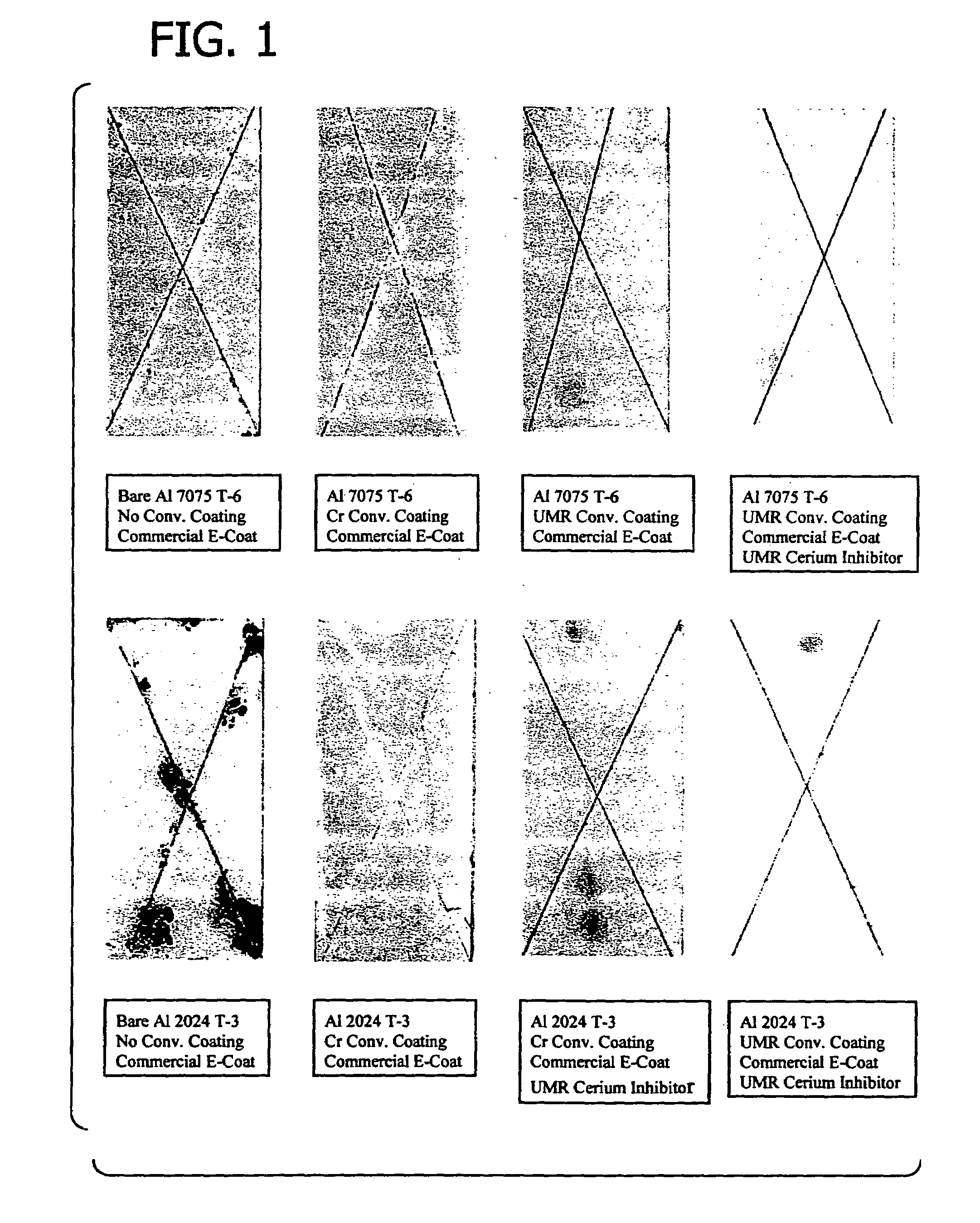Additive-assisted, cerium-based, corrosion-resistant e-coating
- Summary
- Abstract
- Description
- Claims
- Application Information
AI Technical Summary
Benefits of technology
Problems solved by technology
Method used
Image
Examples
examples
[0050]Samples were coated according to the process of the invention and tested. Pictures of samples tested using ASTM B-117 neutral salt spray and SO2 are presented in FIGS. 1 and 2. In FIG. 1, the photographs with the legend “UMR Cerium Inhibitor” are of samples prepared according to the invention, the others are not. In FIG. 2, the photograph on the right with the legend “Cerium Nitrate Inhibitor” is of the invention, the photograph on the left is not. These show that the cerium nitrate inhibitor (UMR Cerium Inhibitor) improves the corrosion resistance of the coating. Electrochemical Impedance Spectroscopy (EIS) data are presented in FIG. 3. Plot A and C are of samples upon conventional application of a commercial e-coat paint; plot A being with an underlying Cr conversion coating; plot C being on bare metal. Plots B and D are of samples upon application of a commercial e-coat paint with the cerium corrosion inhibitor of the invention; plot B being with an underlying Cr conversion...
PUM
| Property | Measurement | Unit |
|---|---|---|
| Temperature | aaaaa | aaaaa |
| Temperature | aaaaa | aaaaa |
| Temperature | aaaaa | aaaaa |
Abstract
Description
Claims
Application Information
 Login to View More
Login to View More - R&D
- Intellectual Property
- Life Sciences
- Materials
- Tech Scout
- Unparalleled Data Quality
- Higher Quality Content
- 60% Fewer Hallucinations
Browse by: Latest US Patents, China's latest patents, Technical Efficacy Thesaurus, Application Domain, Technology Topic, Popular Technical Reports.
© 2025 PatSnap. All rights reserved.Legal|Privacy policy|Modern Slavery Act Transparency Statement|Sitemap|About US| Contact US: help@patsnap.com



